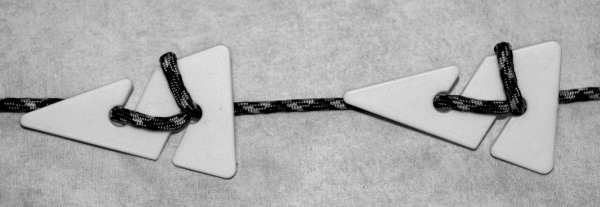Thoughts about the importance of body position and cave diving.
When we agree to lead a cave dive, we have — in effect — accepted a heightened responsibility. From one perspective — an important one — our job as lead diver is to keep our buddy(ies) safe, focused, aware and informed. In the simplest terms, we’ve agreed to get everyone to where we want to go, and — far more important — that on the way there, we’ll make the best effort possible to lay a breadcrumb trail to point the way back to where we started. And all this “work and responsibility” is so our journey back out of the cave can be completed without a hiccup or hesitation; and without any need for an in-situ debate. In other words, our exit will be clean, without stress, and fun.
Let me start off by saying it is a privilege to be the lead swimming into a cave. Even a dive along a familiar route has something to teach us, and leading any cave dive, even the most straightforward one, can be the greatest learning experience whether you are a newbie or a seasoned cave diver. Also, the lead diver is the one controlling the dive’s tempo and — to a great extent — its character.
What an opportunity!
One simple secret to being successful in this role is communication. And since we can’t natter to our buddies as we swim, we have to use non-verbal ways to get a message across when we’re surrounded by water-filled rocks. Eyes and vision are the best options!
Every cave dive starts with a plan — well, at least it should do — and plans are created on the surface, perhaps with a map spread out on a table, and wetnotes in hand. This is when the route is decided, and this is when waypoints and navigation are discussed. (Other things too are decided, but right now, let’s focus on waypoints and navigation.)
So, let’s say that I’ve been designated to lead a team of three open-circuit divers. We have a particular section of the cave in our sights, and the purpose of our visit is to take an “I-love-me-wall” photograph (or perhaps one for a magazine) when we get there.
At some point during the planning process, I will have transferred the basics of our conversations to a page or two in an underwater notebook. That conversation may have been condensed into no more than a simplified stick drawing of the cave’s main line with mnemonic notes such as “T-Left, T-Left, T-Right, Second Jump Right.” All that’s important is that I’ve created it, shared it with my team, and everyone is agreed that it’s correct.
With our dive goal in mind, my team and I will have also worked out how many reels, spools, and navigational markers I need (and they need) for this dive, including how and where each will be deployed.
Great, all straightforward so far; now I just have to do it in the water, during the dive, making sure I get everything in the right place, and at the right time, with fluency and skill. For a relatively experienced and active cave diver, that in itself should be relatively easy, and should be fun; more of a challenge is that my teammates have to SEE me do it, agree with my placements, and understand the consequences of any navigational decisions I make and mark. I also need visual confirmation from them that it’s okay to continue. In short, we need to communicate with each other throughout our dive but most definitely when there are decisions to be made and confirmed.
Key to these needs is positioning myself in the cave so that I can:
- see the main line and the line in the tunnel we’re jumping into (or at least the tunnel itself
- See my buddy(ies)
- Back-reference where we have been
- Scope out where we are headed.
To accomplish all of this, the way I orient myself becomes a critical communications skill. Clearly, the practice of laying in the water, ahead of my companions, facing forwards with the mainline — or whatever I’m working on — immediately in front of me and shielded from everyone else’s gaze is unacceptable and it’s lazy. Unacceptable because doing so is potentially dangerous. Lazy because with a little effort, we can do it properly.
Take for example if I were too lazy to place a marker at a line T; or if I swam across a gap without my buddy noticing? Or if something similar happened with a set of markers indicating the mid-point between two ends-of-line? Or if I obscured another team’s line markers from my buddy, and on the way back, they confused her. (Remember, when we turn our dive to head home, she — my buddy — will be leading.)
These what-ifs may be unlikely, perhaps, but nevertheless possible.
And so, the easy fix is to be aware and present at all times, know exactly what has to be done “right here, right now,” and to make a point of positioning myself correctly at every main decision point and to be sure my buddy(ies) can see me (eye contact) and can see exactly what I’m doing.
(By the way, if you have ever asked yourself why your cave instructor insisted you learn helicopter turns and back kick — possibly beating you with a wet-noodle until you got it right — this is why. Precise control of your body position and orientation in a cave is a required skill for anyone going deeper into a cave than the drip line.)
For the record, decision points include, but certainly are not limited to:
-
- Running a primary reel to the main line and installing an attendance marker
- Making a planned jump by installing markers and line
- Approaching a line T and marking it with a cookie or REM
- Passing a jump but not taking it
- Passing fixed line arrows indicating distance to end-of line
- Passing fixed directional markers indicating an end-of-line different to the intended exit and marking/cancelling them
- Passing another team’s spool, jump reel, line marker(s) or anything that may be confusing especially in a lights-out/low-vis exit
- Dropping or retrieving stage or deco bottles
- Any point during the dive where you want confirmation which way is “home”
Correct body positioning is simply a function of fore planning and common sense. Take for example setting a jump. An acceptable procedure for RAID divers is:
- Thinking ahead I prepare my line markers and a spool
- As we approach the jump, I signal the jump is ahead and get confirmation from my team that they understand what’s ahead
- At a convenient spot but within reach of the line and close to the marker or markers indicating the jump, I stop and change my orientation in the cave so that I can see the main line in both directions (and “okay” it if need be), I can see my buddy(ies), I can see the end of the jump line into which I’m going to tie my jump spool. (See diagram below.)
- I install my cookie indicating the direction of “out” and install a spool or jump reel
- I indicate the direction of “out” to my buddies with a hand-signal, and get confirmation
- I show them the direction I’m going to swim and when possible the bitter end of the jump line I am tying into
- I signal OK, wait for confirmation, and make the jump and install an attendance marker on my line close to my tied-off spool
- When the jump line is installed, I move away and orient myself to watch my buddies swim across and inspect the jump spool — confirming it is installed correctly and adding their personal attendance markers
- Everyone signals OK, I reorient to the direction of the jump line, and continue the dive.
Of course, different circumstances, and factors such as the size of the passage, the length of the jump, and the size of the team may require a slightly different approach, but what’s important — and a key pillar in safe cave diving — is that the lead diver takes the time and makes the effort to include his/her buddy(ies) in the decision-making process and pauses long enough to get confirmation that everything is understood and Okay at EVERY decision point.
All this does take time. On a dive with complex navigation and five or six jumps, making the effort to be a good lead would add eight or ten minutes to the overall length of your dive. Who knows, perhaps more. However, taking the trouble to do things properly may mean the difference between everyone getting out as a team or not.
Yea, it’s worthwhile.
Steve Lewis is an avid diver, best-selling author, adventurer and motivational speaker. Among other eclectic pursuits, he is also a RAID Cave instructor-evaluator.
© Steve Lewis, 2019.
Contact training@techdivertraining.org for more information or for permission to republish / share this essay.




























 An instructor was teaching two students an advanced trimix CCR class. Unfortunately due to two of the cells being current limited and the voting logic voting out the ‘good cell’, and the instructor being a victim to a number of powerful human factor biases, they had an oxygen toxicity seizure at depth. One of this buddies took the diver to the surface but never recovered.
An instructor was teaching two students an advanced trimix CCR class. Unfortunately due to two of the cells being current limited and the voting logic voting out the ‘good cell’, and the instructor being a victim to a number of powerful human factor biases, they had an oxygen toxicity seizure at depth. One of this buddies took the diver to the surface but never recovered.